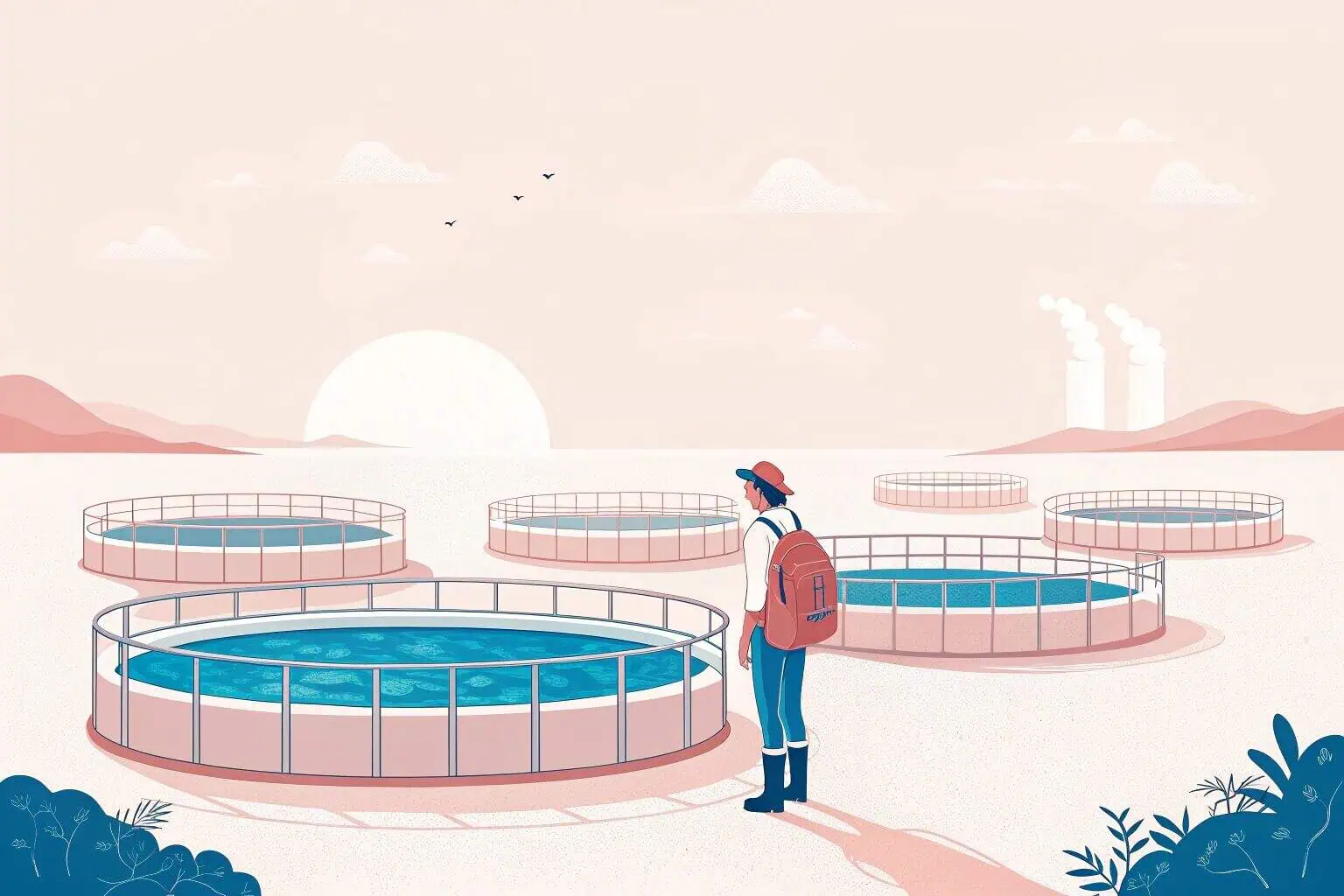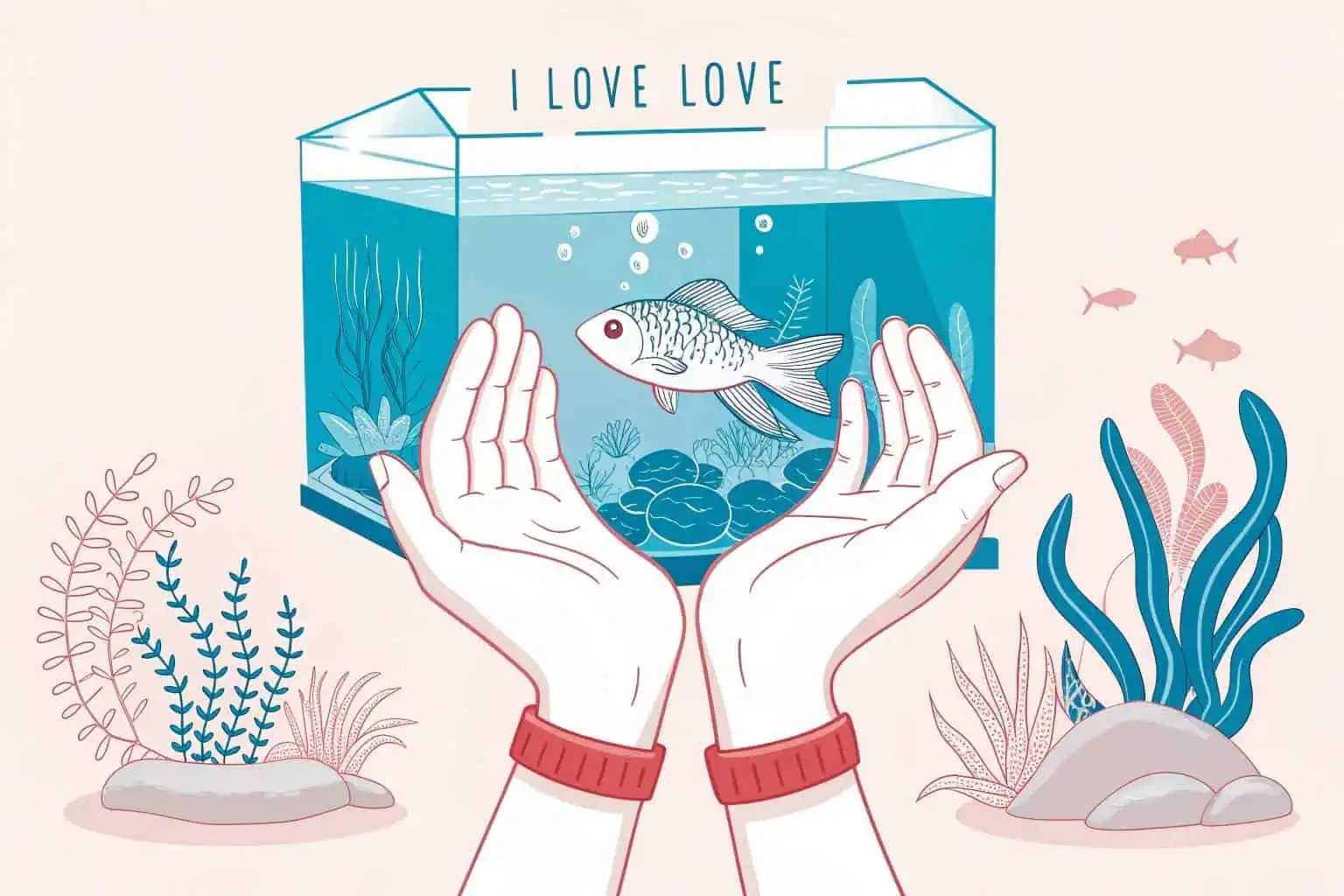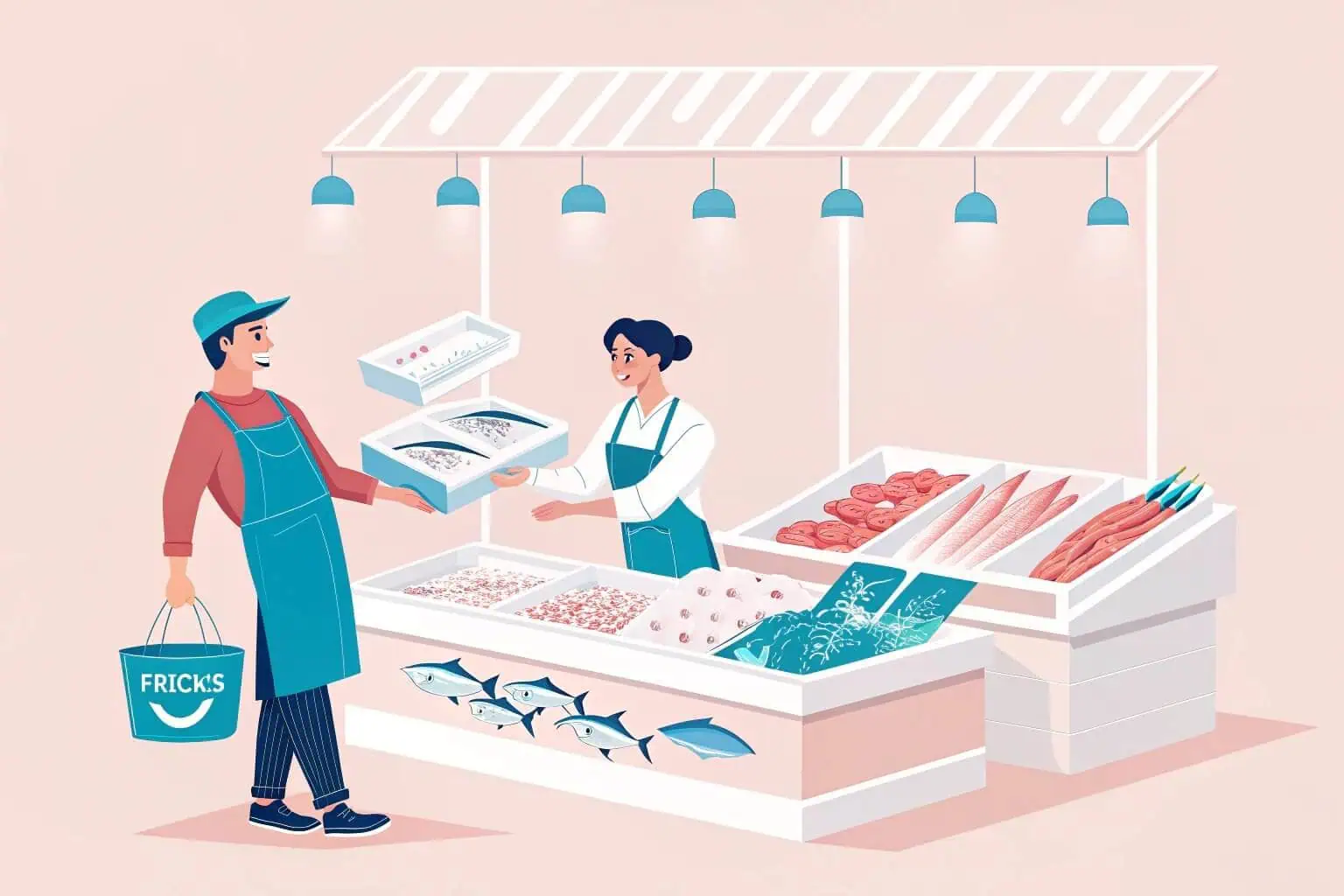How can I make a fish farm?
Have you ever dreamed of starting your own fish farm but felt overwhelmed by the process? You're not alone. Many people are drawn to aquaculture but are stopped by the seeming complexity.
Yes, you can start a fish farm with careful planning. Focus on choosing the right system, managing water quality, and developing a solid business plan. Starting small allows you to learn and grow your operation successfully. It’s a journey of science, technology, and smart management.

Starting a fish farm feels like a big step. I've been in this industry for a while, and I've seen how it combines science with practical skill. It’s more than just raising fish; it’s about creating a sustainable system. The biggest challenge is often balancing environmental impact with production needs. But with the right approach, a fish farm can be a successful business and even help the environment. Let's break down what it takes to get started.
How much does it cost to start a fish farm?
Worried about the high costs of starting a fish farm? It's a common concern that holds many potential farmers back from this rewarding venture. Don't let the numbers scare you away.
The cost to start a fish farm varies widely, from a few thousand dollars for a small-scale operation to hundreds of thousands for a large commercial enterprise. Key expenses include land, tanks or ponds, fish stock, feed, and water management systems. Using modern solutions can significantly lower initial costs.

When I first looked into this, the potential costs were daunting. The final number really depends on your choices. You have to think about both the initial setup and the daily running costs. The type of system you choose is the biggest factor. Traditional concrete or earthen ponds require heavy machinery, permits, and a lot of time. Modern alternatives have completely changed the game. For example, our Bancy collapsible plastic fish tanks1 don't require a construction crew. You can set one up in an afternoon on any level piece of ground. This dramatically lowers the barrier to entry. It means less upfront investment in site preparation and labor, allowing you to put more of your budget toward high-quality fish stock and feed, which is where the real growth happens. These modern systems offer a more flexible and affordable entry point into the world of aquaculture.
Initial Investment vs. Operational Costs
Your initial investment is the money you need to get the doors open. This includes the physical assets. Operational costs are the recurring expenses to keep the farm running. A smart budget plans for both.
| Category | Examples | Importance |
|---|---|---|
| Initial Investment2 | Tanks, pumps, filters, initial fish stock | High (Foundation of your farm) |
| Operational Costs3 | Fish feed, electricity, water tests, labor | High (Keeps your farm running) |
Sample Budget for a Small-Scale Startup
To make it more concrete, here’s a sample budget for a small startup using a modern, collapsible tank system.
| Item | Estimated Cost (USD) | Notes |
|---|---|---|
| Bancy Collapsible Tank (10m³)4 | $500 - $1,500 | A durable, easy-to-install option. |
| Water Pump & Basic Filter | $200 - $500 | Essential for water circulation and cleaning. |
| Initial Fish Stock | $100 - $300 | Depends on species and quantity. |
| Fish Feed (First 3 Months) | $300 - $600 | One of the largest recurring costs. |
| Water Test Kits5 | $50 - $150 | Non-negotiable for monitoring water health. |
| Total Estimated Startup | $1,150 - $3,050 | A flexible and affordable entry point. |
Hidden Costs and How to Plan for Them
Beyond the obvious costs, new farmers often overlook expenses like permits, insurance, and marketing. It's wise to set aside a contingency fund—say, 15-20% of your initial budget—to cover these unexpected needs. A surprise pump failure or a sudden need for medication can be stressful if you haven't planned for it.
Can I start my own fish farm?
Do you feel like you don't have the expertise to start your own fish farm? It’s a field that seems to require a science degree, which can be intimidating.
Absolutely. Anyone with a passion for aquaculture can start their own fish farm. Success depends on your willingness to learn the fundamentals of fish biology, water quality management, and business planning. Start with a manageable system to gain hands-on experience before scaling up your operation.

I believe that passion is the most important ingredient. The science is real, but it's not out of reach. The industry is more about continuous learning than having all the answers from day one. The key is to start smart. Don't try to build a massive operation overnight. Begin with a system that you can manage yourself, like one of our smaller collapsible tanks6. Think of it as your personal aquaculture laboratory. In a controlled environment, it's far easier to learn the ropes. You can closely monitor water chemistry, see how your fish respond to different feeds, and understand their daily rhythms without being overwhelmed. This hands-on experience is more valuable than any textbook. It teaches you to solve problems as they arise and builds your confidence. And because our systems are modular, you can easily add more tanks as your skills and business grow.
Your Startup Checklist
Here is a simple checklist to guide you on your journey. Following these steps will help you build a solid foundation for your farm.
| Step | Key Action | Why It's Important |
|---|---|---|
| 1. Business Plan7 | Outline your goals, budget, and market. | Turns your idea into an actionable strategy. |
| 2. Choose System | Select tanks, pumps, and filters. | Your system is the heart of your farm. |
| 3. Select Species8 | Pick a fish that suits your climate and market. | The right fish is easier to raise and sell. |
| 4. Master Water | Learn to test and manage water quality. | Healthy water equals healthy fish. |
| 5. Secure Market | Identify who will buy your fish. | Ensures your hard work pays off. |
Essential Skills for a Fish Farmer
A successful fish farmer wears many hats. You need to be a keen observer to spot early signs of stress or disease in your fish9. Basic handyman skills are a huge plus for fixing leaks or pumps. And don't forget business acumen—tracking expenses and managing sales are just as important as managing water quality.
Learning Resources for Beginners
You don't have to learn everything the hard way. Many universities offer aquaculture extension programs10 with practical advice. Online communities and forums can connect you with experienced farmers. I also recommend subscribing to industry magazines to stay updated on new techniques and technologies. Finding a mentor can be the single most valuable step you take.
Do fish farms make money?
You're thinking about investing your time and money, but you're wondering if it will pay off. Is fish farming actually a profitable business or just a challenging hobby?
Yes, fish farms can be very profitable, but success is not guaranteed. Profit depends on good management, operational efficiency, and a solid market strategy. High-density farming in controlled systems often yields the best financial returns by maximizing output in a small footprint.

Profitability in aquaculture is a direct result of careful planning and hard work. It's a business where cutting corners on essentials like water quality or feed will always cost you more in the long run. The most successful farms I've seen are masters of efficiency. They produce the maximum amount of fish with the minimum amount of resources. This is where technology plays a huge role. For instance, our Bancy galvanized sheet fish tanks can be equipped with a vortex flow design. This feature uses the water's natural circulation to pull solid waste toward a central drain for easy removal. This simple but brilliant piece of engineering keeps the water cleaner, reduces the stress on your fish, and allows you to maintain a healthier population at a higher density. Better water quality leads to better feed conversion ratios11, meaning your fish grow faster on less feed. That's a direct boost to your bottom line.
Key Profit Drivers and Risks
Understanding what drives profit and what poses a risk is crucial for financial success.
| Factor | How It Boosts Profit | Associated Risk |
|---|---|---|
| Market Price12 | Selling at a high price point. | Market prices can fluctuate unexpectedly. |
| Feed Conversion13 | Lower feed costs per pound of fish. | Poor quality feed can harm fish health. |
| Stocking Density | More fish in the same space. | Overstocking can lead to disease and crashes. |
| Energy Costs | Efficient pumps and heaters save money. | Energy prices can increase. |
| Disease | Preventing outbreaks protects your stock. | A single outbreak can wipe out your harvest. |
Maximizing Profit with Modern Technology
Technology is your best friend in maximizing profit. Automated feeders14 ensure your fish get the right amount of food at the right time, reducing waste. Water quality sensors15 can alert your phone if oxygen levels drop. And as I mentioned, systems like our Bancy tanks with vortex flow drastically cut down on cleaning time and improve fish health, directly boosting your efficiency and profitability.
Developing a Strong Market Strategy
Raising healthy fish is only half the battle; you also need to sell them. Research your local market. Are there high-end restaurants that would pay a premium for fresh, locally-grown fish? Could you sell directly to consumers at a farmers' market? A clear plan for who your customers are and how you'll reach them is essential for turning your harvest into revenue.
How many fish should I put in a 1 acre pond?
Are you trying to figure out the right number of fish for your pond? Overstocking can lead to disaster, while understocking feels like a wasted opportunity. Finding the sweet spot is crucial.
For a typical 1-acre pond with standard aeration, you can stock around 1,000 to 2,000 fish like catfish or tilapia. However, this number is a basic guideline. The ideal stocking density depends heavily on your management system, aeration, and filtration capabilities.

This is one of the most common questions I get from new farmers. The "right" number isn't fixed. A traditional earthen pond is a very different environment from a modern, high-density tank system. In a natural pond, you are limited by the ecosystem's ability to process waste and provide oxygen. In a controlled system, you create the ideal environment yourself. This is where the quality of your equipment is critical. For example, our galvanized pipe fish tanks16 are not just containers; they are the foundation of a stable aquatic environment. They are robust, corrosion-resistant, and made from materials that won't leach harmful chemicals into the water. This stability gives you the confidence to manage a higher stocking density. You know the container itself is safe, so you can focus entirely on managing the water quality and health of your fish, leading to more predictable and profitable harvests.
Traditional Pond vs. High-Density Tank System
Let's compare a one-acre traditional pond to a high-density system using Bancy tanks within the same area.
| Feature | Traditional Earthen Pond17 (1 Acre) | Bancy High-Density Tank System18 (in 1 Acre) |
|---|---|---|
| Stocking Density | Low (e.g., 1,000-2,000 fish) | Very High (e.g., 50,000+ fish) |
| Water Control | Limited; depends on rain and runoff. | Total control over quality and temperature. |
| Waste Management | Natural decomposition; slow and inefficient. | Centralized and rapid removal (vortex flow). |
| Harvest Efficiency | Difficult and labor-intensive. | Simple, fast, and complete. |
| Land Use | Requires the full acre for water surface. | Uses a fraction of the land for a higher yield. |
| Scalability | Difficult; requires major earthworks. | Easy; add more modular tanks as you grow. |
Factors Influencing Stocking Density
The "right" number of fish depends on several factors. The species matters—some fish are more tolerant of crowding than others. Your target harvest size is also key; if you want larger fish, you need to give them more space. The quality of your feed and your own experience level also play a big role in how many fish your system can successfully support.
The Role of Aeration and Filtration
Aeration and filtration are what make high-density farming19 possible. An aerator adds vital oxygen to the water, especially during hot weather or overnight when oxygen levels naturally drop. A good filtration system removes ammonia and other waste products that are toxic to fish. Investing in a quality aeration and filtration20 setup is a direct investment in your pond's carrying capacity.
Conclusion
Starting a fish farm is a challenging yet achievable goal. With the right knowledge, a smart plan, and modern equipment, you can build a successful and profitable operation from the ground up.
-
Explore the advantages of collapsible plastic fish tanks for a cost-effective and efficient aquaculture setup. ↩
-
Understanding the components of Initial Investment is crucial for effective budgeting and planning in aquaculture. ↩
-
Exploring Operational Costs helps in managing finances and ensuring the sustainability of your fish farm. ↩
-
Explore the advantages of Bancy Collapsible Tanks, including durability and ease of installation, to enhance your startup's efficiency. ↩
-
Learn about the critical role of water test kits in maintaining fish health and ensuring a successful aquaculture operation. ↩
-
Explore this resource to find high-quality, manageable tanks perfect for starting your aquaculture journey. ↩
-
A comprehensive business plan is essential for setting clear goals and securing funding for your farm. ↩
-
Selecting the appropriate species ensures easier management and better marketability of your farm's products. ↩
-
Understanding early signs helps in maintaining healthy fish and preventing disease outbreaks. ↩
-
Explore this link to find comprehensive programs that provide practical advice and support for aspiring aquaculture farmers. ↩
-
This link offers expert advice on optimizing feed efficiency, which directly impacts growth rates and profitability in fish farming. ↩
-
Exploring this link will provide insights into how to effectively manage and maximize profit through market price strategies. ↩
-
This resource offers valuable tips on enhancing feed efficiency, which is crucial for reducing costs and boosting profits in aquaculture. ↩
-
Explore this link to understand how automated feeders can optimize feeding schedules and reduce waste, boosting your fish farm efficiency. ↩
-
Learn how water quality sensors can help maintain optimal conditions, ensuring healthier fish and higher profitability. ↩
-
Explore this resource to understand why galvanized pipe fish tanks are essential for creating a stable and safe aquatic environment. ↩
-
Explore this resource to understand the advantages and limitations of traditional ponds in aquaculture. ↩
-
Learn how high-density tank systems can maximize yield and control in aquaculture operations. ↩
-
Learn how proper aeration and filtration are crucial for supporting high-density farming and maximizing productivity. ↩
-
Explore top-rated systems to ensure your pond has optimal oxygen levels and waste removal, promoting healthier aquatic life. ↩